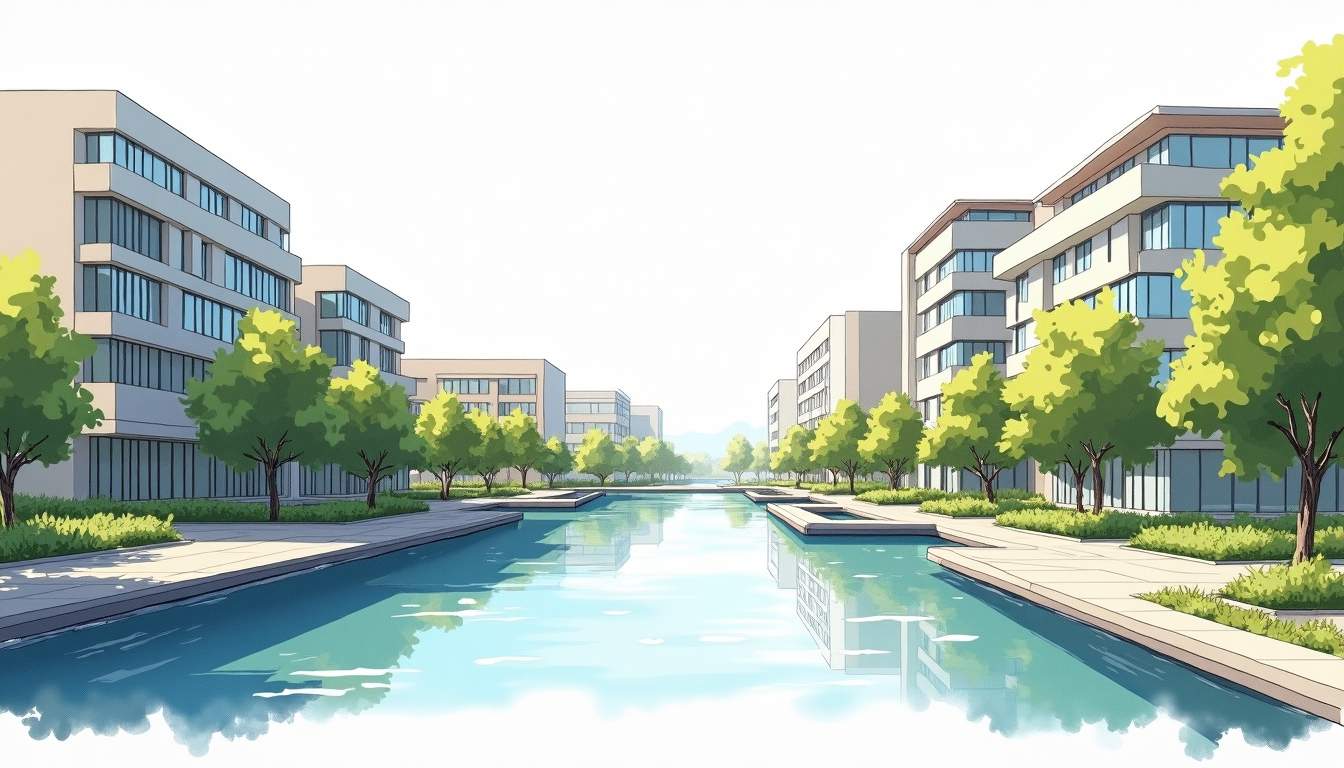
Waterfront views have a way of changing the feel of a space. Whether looking out over a calm lake, a bustling river, or the endless expanse of the ocean, people often report feeling calmer, more focused, and more content when they spend time near water. This article explores the science, psychology, and everyday practices behind why water views boost mood and offers practical suggestions for integrating waterfront experiences into daily life.
Water stimulates multiple senses at once: the visual rhythm of waves, the soft sounds of lapping or rushing water, the cool breeze carrying a saline tang, and sometimes the shifting light as the sun moves across the surface. This multisensory input engages the parasympathetic nervous system, which promotes relaxation, lowers heart rate, and reduces cortisol levels associated with stress.

Research in environmental psychology and neuroscience supports the idea that natural water scenes are particularly restorative. Studies show that viewing water reduces mental fatigue, enhances attention, and improves mood more effectively than urban scenes without natural elements. Theories such as Attention Restoration Theory (ART) and Stress Recovery Theory (SRT) explain these effects by suggesting that natural settings allow the brain to recover from cognitive overload and perceived environmental threats.
Attention Restoration Theory proposes that environments offering “soft fascination” — gentle, undemanding stimuli like the shimmering of water or the movement of clouds — help restore depleted directed attention. Unlike tasks that require intense focus, these stimuli occupy the mind just enough to allow cognitive resources to replenish, leading to improved concentration and creativity afterward.
Being near water can trigger measurable physiological changes. Short visits to waterfronts can lower blood pressure, reduce heart rate variability associated with stress, and decrease levels of stress hormones. Even simulated water sounds or images have been found to produce small but consistent calming effects in controlled studies.
In addition to immediate physiological responses, long-term exposure to aquatic environments can contribute to overall well-being by encouraging physical activity, social interaction, and mindfulness practices such as meditation or yoga near water. The dynamic nature of water also provides a setting conducive to reflection and emotional release, which can be particularly beneficial for mental health.
Moreover, the unique properties of water environments, such as humidity and ionization of the air, may improve respiratory function and skin hydration. Some research suggests that negative ions produced near moving water can enhance mood and reduce symptoms of depression, although more studies are needed to confirm these effects in diverse populations. These multifaceted influences underscore the complex relationship humans share with water and its role in holistic health.
Beyond immediate physiological shifts, waterfront views can have a durable impact on emotions and mental health. Regular exposure to water is associated with reduced symptoms of anxiety and depression, improved mood stability, and a greater sense of well-being. These benefits seem to come from a mix of perceptual, cognitive, and social factors.

The predictability of waves and tides, combined with their inherent variability, offers a comforting paradox: a sense of order that still provides novel input. Observing water can bring about feelings of awe and perspective, transferring attention away from personal worries to broader, more calming reflections.
Rumination — repetitive negative thinking — tends to decrease when attention shifts to external, absorbing stimuli like a shoreline or a riverbank. Waterfront settings naturally encourage mindfulness: noticing sensations, sounds, and shifting light without the pressure of interpretation or problem-solving. This mindful attention is linked to lower stress and improved emotional regulation.
Waterfronts often become communal spaces where people meet, exercise, and relax. These social interactions foster a sense of belonging and shared enjoyment. Even passive social exposure — watching others enjoying the water — can boost mood by affirming that leisure and pleasure are permissible parts of life.
Moreover, waterfronts often serve as cultural and recreational hubs, hosting events such as festivals, markets, and outdoor performances that strengthen community identity. The sensory richness of these environments—sounds of water lapping, the smell of salt or fresh water, the cooling breeze—also enhances sensory integration, which can be particularly soothing for individuals experiencing sensory overload or emotional distress. Engaging in group activities in these settings further encourages teamwork, empathy, and mutual support, promoting mental health through strengthened social networks.
Recent studies also suggest that regular visits to waterfronts can aid cognitive functioning by providing restorative environments that reduce mental fatigue. The combination of natural beauty and low-stimulation backgrounds allows the brain to replenish cognitive resources, enhancing focus and creativity in subsequent tasks. As such, waterfront exposure offers a multifaceted psychological boost that extends well beyond relaxation alone.
Design decisions influence how effectively waterfront views improve mood. Thoughtful architecture frames vistas, invites natural light, and creates comfortable transitional spaces between the built environment and water. Balconies, large windows, promenades, and green buffers all help integrate water into daily experience without overwhelming it.

Urban planners increasingly recognize waterfronts as vital public assets, prioritizing access, safety, and mixed-use development that encourages prolonged, positive engagement with water. When people can easily reach a shoreline or riverside path from home or workplace, the mental health benefits become part of daily life rather than occasional luxuries.
Biophilic design incorporates natural forms and processes into built environments to support well-being. In waterfront settings this can include native plantings that provide habitat and sensory richness, materials that reflect or complement the water’s tones, and sightlines that prioritize unobstructed views. These elements enhance the restorative potential of water by creating cohesive, calming environments.
Not all communities have equal access to waterfronts, and equitable design matters. Ensuring ADA-compliant paths, safe lighting, seating, and affordable amenities helps a broader range of people benefit from waterfront exposure. Public policies that protect shorelines and limit privatization maintain collective access and the social benefits that come with it.
There are many simple, low-cost ways to harness the mood-boosting power of water. Regular, intentional engagement with waterfront views makes the benefits more consistent and integrated into everyday life. Below are practical strategies that fit into different schedules and preferences.
Even a few minutes spent looking at a water view can reset the mind. For those who live or work near water, setting an alarm for short micro-breaks to step outside, breathe, and observe the surface can be surprisingly restorative. For city dwellers, positioning a desk near a window with a river or harbor view — or using photos and sounds of water — can help during intense work periods.
Walking along a waterfront combines the benefits of physical activity with restorative scenery. A brisk 20- to 30-minute walk by the water supports cardiovascular health while encouraging mental recovery. Engaging senses by noticing bird calls, the smell of wet earth, or the temperature of the air deepens the experience and strengthens mood benefits.
Not everyone can live by water, but many can create a “water-inspired” corner at home. A small fountain, an aquarium, or carefully chosen artwork and soundscapes can simulate aspects of waterfront settings. Pairing these elements with comfortable seating and plants enhances the calming effect and makes it easier to practice short relaxation rituals.
Waterfront experiences vary by season and culture, and these differences shape how people respond to water. In warmer months, beaches and riverbanks become social hubs; in colder months, the stark clarity of icy shores can offer quiet beauty and contemplative space. Both extremes have restorative value when approached with appropriate clothing and safety awareness.
Cultural relationships to water influence how it is used and valued. Some cultures integrate water into daily rituals or spiritual practices, deepening its psychological significance. Recognizing and respecting these cultural perspectives enriches public waterfront programming and ensures that spaces feel welcoming to diverse communities.
Seasonal planning — such as seating with wind protection, warm lighting, or shade structures — extends the usability of waterfronts year-round. Simple amenities like public restrooms, drinking water, and clear signage increase comfort and encourage repeat visits, which are key for lasting mental health benefits.
Evaluating the mood benefits of waterfront access can guide individual habits and public investments. Personal tracking, community surveys, and collaboration with local health organizations help quantify effects and prioritize improvements that matter to residents.
To make benefits last, it's important to create routines that encourage repeated exposure rather than one-off experiences. Consistency can be as simple as a weekly walk, a daily window check-in, or a monthly meet-up with friends by the water. Small rituals anchor positive associations and help translate short-term calm into long-term resilience.
Combining waterfront exposure with existing habits increases the chance of sticking with it. For example, taking a coffee to a riverside bench, doing a morning stretch by the lake, or meeting colleagues for a walking meeting near the harbor are practical ways to turn occasional visits into regular practices.
Communities can organize events like guided nature walks, clean-up days, and outdoor fitness classes that encourage positive use of waterfronts. Such programs foster social bonds and raise awareness of the physical and mental health benefits of spending time by water.
Waterfront views provide a unique combination of sensory richness, cognitive respite, and social opportunity that supports mood and mental health. From measurable physiological changes to deeper emotional benefits like reduced rumination and increased awe, water helps restore balance in a busy world.
Design decisions, equitable access, and simple daily practices determine who benefits and how often. With intentional planning — both individually and collectively — waterfronts can be turned into accessible, restorative assets that improve mood and strengthen community well-being for many people.
Embrace the mood-boosting benefits of waterfront views every day at Tennessee National. Nestled in Tennessee’s stunning landscapes, our luxury gated community offers serene waterfront dining, a private marina, and scenic nature trails—all designed to enhance your well-being and connect you with nature’s calming influence. Whether you prefer a move-in ready home or a custom build, experience resort-style living that nurtures body and mind. Schedule a private tour today and start your journey toward a balanced, vibrant lifestyle by the water.